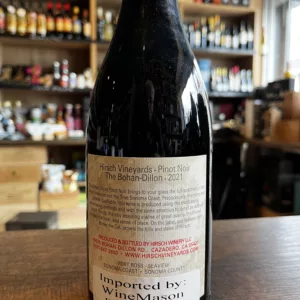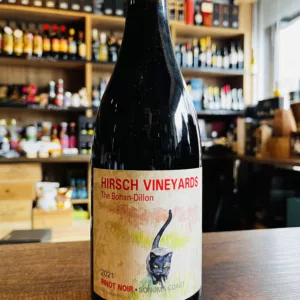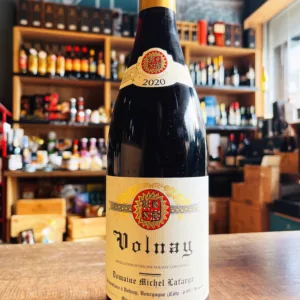-
 Herdade dos Grous -Alentejo, Portugal’s largest province holds the traditional Portuguese charm and a Moorish heritage, which can be seen in all its architecture. Its continental climate with Mediterranean influences, offers ideal conditions for the production of fantastic wines and extremely high quality regional products.
Herdade dos Grous -Alentejo, Portugal’s largest province holds the traditional Portuguese charm and a Moorish heritage, which can be seen in all its architecture. Its continental climate with Mediterranean influences, offers ideal conditions for the production of fantastic wines and extremely high quality regional products. -

 Originating from selected parcels of centennary vines at Quinta das Carvalhas, the Carvalhas Vinhas Velhas is the very best that we can make at Real Companhia Velha. The result, is a superb Douro red, which not only expresses the singularity of this estate and its north facing vineyards, but also reflects on Douro’s history, due to the vast diversity of varieties present in the parcels of old vines. The Carvalhas extracts from these vines the power and concentration and from its sun exposure the freshness and balance. A wine that will certainly offer great character after ageing few decades in bottle.
Originating from selected parcels of centennary vines at Quinta das Carvalhas, the Carvalhas Vinhas Velhas is the very best that we can make at Real Companhia Velha. The result, is a superb Douro red, which not only expresses the singularity of this estate and its north facing vineyards, but also reflects on Douro’s history, due to the vast diversity of varieties present in the parcels of old vines. The Carvalhas extracts from these vines the power and concentration and from its sun exposure the freshness and balance. A wine that will certainly offer great character after ageing few decades in bottle. -

 This wine comes from the very poor granit wineyard of Saint Hippolyte. The terroir is made of the degradation of the grey granit of Thannenkirch, light, white, sandy, poor and extremely dry, similar foind in the Cote Des Nuits. The growing of the vine is limited, and it must invest quickly in the maturation of the fruits. This is why this wineyard is one of the first ever planted in Alsace.
This wine comes from the very poor granit wineyard of Saint Hippolyte. The terroir is made of the degradation of the grey granit of Thannenkirch, light, white, sandy, poor and extremely dry, similar foind in the Cote Des Nuits. The growing of the vine is limited, and it must invest quickly in the maturation of the fruits. This is why this wineyard is one of the first ever planted in Alsace. -
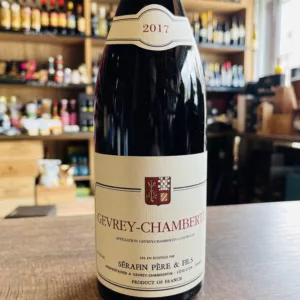 Domaine Sérafin estate includes vineyard holdings in Gevrey-Chambertin, Morey-St.-Denis, and Chambolle-Musigny. His prized Charmes-Chambertin Grand Cru plot occupies a mere 0.31 hectares with vines planted in 1946. The domaine is now run by cousins Frédérique and Karine who are continuing the family tradition of making bold and structured wines. Their Pinots benefit from a period of bottle age and typically express fine tertiary characteristics. They do not fine or filter their wines, and only rack when necessary. Not shy of new oak, they use up to 50% on their straight Bourgogne and often 100% on the rest of their cuvées depending on the concentration. The wines tend to be ample and fleshy, and the richest ones need some cellaring in order to better integrate the spicy, cedarwood flavours.
Domaine Sérafin estate includes vineyard holdings in Gevrey-Chambertin, Morey-St.-Denis, and Chambolle-Musigny. His prized Charmes-Chambertin Grand Cru plot occupies a mere 0.31 hectares with vines planted in 1946. The domaine is now run by cousins Frédérique and Karine who are continuing the family tradition of making bold and structured wines. Their Pinots benefit from a period of bottle age and typically express fine tertiary characteristics. They do not fine or filter their wines, and only rack when necessary. Not shy of new oak, they use up to 50% on their straight Bourgogne and often 100% on the rest of their cuvées depending on the concentration. The wines tend to be ample and fleshy, and the richest ones need some cellaring in order to better integrate the spicy, cedarwood flavours. -
 The Marquises Incisa della Rocchetta are among the protagonists of Italian history, from the early Middle Ages to the dawn of the Baroque age and beyond. Mario Incisa della Rocchetta was born in Rome in 1889 into a Piedmontese family, studied agriculture in Pisa and immediately cultivated a strong inclination for agronomy, with the dream, already in the 1920s, of finding perfection in agriculture and respecting Earth. He moved to Maremma in the 1940s after marrying Clarice della Gherardesca in 1930, a descendant of one of the oldest families in Tuscany, that of Count Ugolino sung by Dante in the Divine Comedy. The Marquis immediately understood that it was one of the most extraordinary biotypes of Mediterranean Europe and began to experiment with some French vines, concluding that cabernet, in fact so far from the Tuscan and Piedmontese tradition of Sangiovese and Nebbiolo respectively, "has the bouquet I was looking for." This is how, thanks to the first scions received from the Salviati Dukes of Migliarino (near Pisa), also he planted the first cabernet sauvignon vineyard in the land that slopes down from the Castiglioncello fortress to the sea, in the early 1940s. We know , in reality, that alongside cabernet (sauvignon and franc), the vines used in the first planting were various and ranged from canaiolo to ciliegiolo to white grape vines. The mass selection, oriented towards the sole use of cabernet sauvignon, arrived in a more recent era between 1960 and 1968. Mario had sensed an extraordinary similarity between his lands in Bolgheri and the Graves region in Bordeaux, due to a mainly gravelly and pebbly soil, mixed with clay, very favorable for the production of great reds. From 1945 to 1967 Sassicaia remained a strictly private product, reserved for family and friends. The first vintage to appear on the market was 1968. The ancient and splendid land that Clarice della Gherardesca receives as an inheritance is a Mediterranean park stretching between the hill of the hermitage-fortress of Castiglioncello and the coast of dunes and marshes. A 2,500 hectare property in the heart of Maremma which extends over an area of 13 kilometers from the hill to the sea and runs along the famous cypress avenue. The soils, partially clayey, located at an altitude between 60 and 400 meters above sea level, with exposure to the west/southwest, show different and composite morphological characteristics, with a strong presence of limestone areas rich in alberese, of gabbro and stones. The climate has its own peculiarity: the embrace of hills that extends from Bibbona to Castagneto protects the vineyards and olive groves from north-east winds, while in summer this corridor is refreshed by sea breezes. The energy and light of the sun is reflected on the sea, irradiating the hills which in turn retain the sea breeze and generate refreshing humidity. The woods, dense and uncontaminated, constitute an extraordinary natural lung. This is the microclimate that characterizes Tenuta San Guido An area that deserves its own appellation: DOC Bolgheri Sassicaia. This isn't just tasting good wine, is creating good memories.
The Marquises Incisa della Rocchetta are among the protagonists of Italian history, from the early Middle Ages to the dawn of the Baroque age and beyond. Mario Incisa della Rocchetta was born in Rome in 1889 into a Piedmontese family, studied agriculture in Pisa and immediately cultivated a strong inclination for agronomy, with the dream, already in the 1920s, of finding perfection in agriculture and respecting Earth. He moved to Maremma in the 1940s after marrying Clarice della Gherardesca in 1930, a descendant of one of the oldest families in Tuscany, that of Count Ugolino sung by Dante in the Divine Comedy. The Marquis immediately understood that it was one of the most extraordinary biotypes of Mediterranean Europe and began to experiment with some French vines, concluding that cabernet, in fact so far from the Tuscan and Piedmontese tradition of Sangiovese and Nebbiolo respectively, "has the bouquet I was looking for." This is how, thanks to the first scions received from the Salviati Dukes of Migliarino (near Pisa), also he planted the first cabernet sauvignon vineyard in the land that slopes down from the Castiglioncello fortress to the sea, in the early 1940s. We know , in reality, that alongside cabernet (sauvignon and franc), the vines used in the first planting were various and ranged from canaiolo to ciliegiolo to white grape vines. The mass selection, oriented towards the sole use of cabernet sauvignon, arrived in a more recent era between 1960 and 1968. Mario had sensed an extraordinary similarity between his lands in Bolgheri and the Graves region in Bordeaux, due to a mainly gravelly and pebbly soil, mixed with clay, very favorable for the production of great reds. From 1945 to 1967 Sassicaia remained a strictly private product, reserved for family and friends. The first vintage to appear on the market was 1968. The ancient and splendid land that Clarice della Gherardesca receives as an inheritance is a Mediterranean park stretching between the hill of the hermitage-fortress of Castiglioncello and the coast of dunes and marshes. A 2,500 hectare property in the heart of Maremma which extends over an area of 13 kilometers from the hill to the sea and runs along the famous cypress avenue. The soils, partially clayey, located at an altitude between 60 and 400 meters above sea level, with exposure to the west/southwest, show different and composite morphological characteristics, with a strong presence of limestone areas rich in alberese, of gabbro and stones. The climate has its own peculiarity: the embrace of hills that extends from Bibbona to Castagneto protects the vineyards and olive groves from north-east winds, while in summer this corridor is refreshed by sea breezes. The energy and light of the sun is reflected on the sea, irradiating the hills which in turn retain the sea breeze and generate refreshing humidity. The woods, dense and uncontaminated, constitute an extraordinary natural lung. This is the microclimate that characterizes Tenuta San Guido An area that deserves its own appellation: DOC Bolgheri Sassicaia. This isn't just tasting good wine, is creating good memories. -
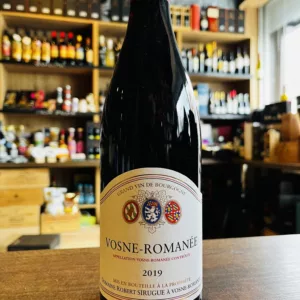
The Sirugue domaine originally belongs to Jean-Francois Jayer who was the paternal uncle of Henri-Jayer, the "King" of Burgundy. JF Jayer and his wife had a son and a daughter (named Jeanne) who subsequently married Joseph Sirugue. Hence the Sirugue surname was introduced to the Jayer family. Robert, who is the father of the current management team (siblings Marie-France & Jean-Louis Sirugue), inherited the land from his dad's brother, Joseph.
-
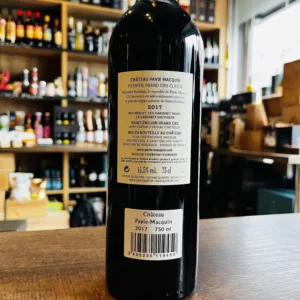
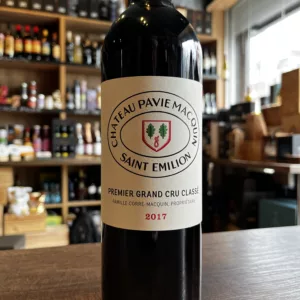 The 2017 Pavie Macquin is a rich, deep and super-expressive wine with remarkable persistence. As always, Pavie Macquin is a potent Saint-Émilion, but the 2017 has terrific energy as well. In 2017, Pavie-Macquin is not as forthcoming in its youth as it can be, and is going to need a few years in bottle to truly come together
The 2017 Pavie Macquin is a rich, deep and super-expressive wine with remarkable persistence. As always, Pavie Macquin is a potent Saint-Émilion, but the 2017 has terrific energy as well. In 2017, Pavie-Macquin is not as forthcoming in its youth as it can be, and is going to need a few years in bottle to truly come together -

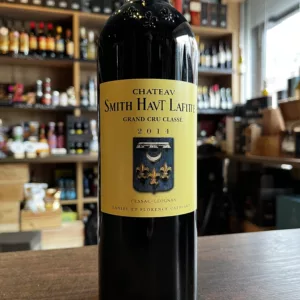 The vines of Château Smith Haut Lafitte are planted in a single block on a Günz gravel plateau in the Pessac-Léognan appellation, producing six different wines. Château Smith Haut Lafitte, a Graves Great Growth in both red and white, and our two second wines Les Hauts de Smith and Le Petit Haut Lafitte, also in red and white. Each has its own unique blend and distinctive aromatic profile.
The vines of Château Smith Haut Lafitte are planted in a single block on a Günz gravel plateau in the Pessac-Léognan appellation, producing six different wines. Château Smith Haut Lafitte, a Graves Great Growth in both red and white, and our two second wines Les Hauts de Smith and Le Petit Haut Lafitte, also in red and white. Each has its own unique blend and distinctive aromatic profile. -
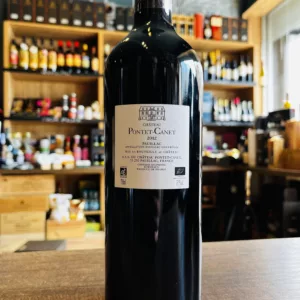
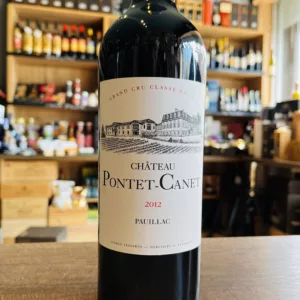 Designated a Fifth Growth in the 1855 Classification, Pontet-Canet has exceeded that classification for many years now and is considered one of the top wines of Bordeaux. Of the 120 hectares (300 acres) With 200 acres under vine, the estate of Pontet-Canet is located in the northern end of the Pauillac commune, across the road from first growth Chateau Mouton Rothschild. The soil composition is mainly gravel over a subsoil of clay and limestone. A wine of real class, pedigree and distinction, the 2012 Pontet-Canet is absolutely gorgeous. The flavours are beautifully nuanced and delineated throughout. The 2012 is decidedly understated next to some other recent vintages, but the magic of this site simply won't be denied.
Designated a Fifth Growth in the 1855 Classification, Pontet-Canet has exceeded that classification for many years now and is considered one of the top wines of Bordeaux. Of the 120 hectares (300 acres) With 200 acres under vine, the estate of Pontet-Canet is located in the northern end of the Pauillac commune, across the road from first growth Chateau Mouton Rothschild. The soil composition is mainly gravel over a subsoil of clay and limestone. A wine of real class, pedigree and distinction, the 2012 Pontet-Canet is absolutely gorgeous. The flavours are beautifully nuanced and delineated throughout. The 2012 is decidedly understated next to some other recent vintages, but the magic of this site simply won't be denied. -
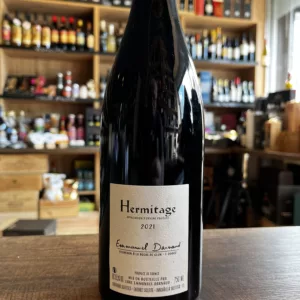
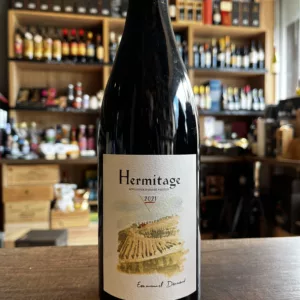 Hermitage Emmanuel Darnaud. Enthusiastic Emmanuel produces polished, generous wines at his winery in La Roche de Glun, sitting on a peninsular which cleaves the Rhône river. His focus is displaying individual expressions of each parcel. They are picked and vinified separately before being placed in wooden casks, vats or larger demi-muids to continue their élevage
Hermitage Emmanuel Darnaud. Enthusiastic Emmanuel produces polished, generous wines at his winery in La Roche de Glun, sitting on a peninsular which cleaves the Rhône river. His focus is displaying individual expressions of each parcel. They are picked and vinified separately before being placed in wooden casks, vats or larger demi-muids to continue their élevage -
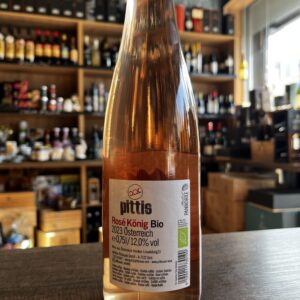
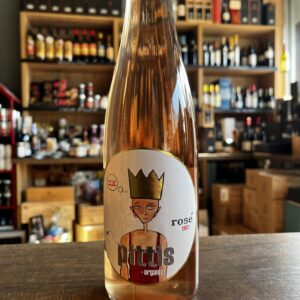 There is a simple and honest feeling in the wine and spirit of Gerhard Pittnauer which hails from his generosity and humility. Given the reins of his vineyard in the mid-1980’s after the unexpected death of his father, Gerhard, then 18 years old, had to train himself to make wine in the midst of scandal and chaos in the Austrian wine market. He chose to become a student of the broader wine world, and, in realizing the exceptionality of the land he farmed and of the indigenous grapes of the region, allowed himself to experiment with some missteps until he found his thesis. He set forth to ‘grow’ wine rather than to ‘make’ it in the cellar, from the autochtone varietals. He did so without any viticultural doctrine until he found that there was a consistent, common thread in the wines he loved to drink from France and elsewhere. If, he thought, these wines were amazing because of biodynamics, then he must do the same to achieve the pinnacle in his own wine. So he tends 15 hectares, half of which he owns and half of which he rents, alongside his wife Brigitte to create what they call living wines. All work is done manually from composting to pruning. There is no calendar that drives them. Nothing is rushed: they believe in quality over speed. They taste for perfect ripeness, select the cleanest grapes, and begin the wine in the cellar in response to the conditions of the vintage. They do incorporate a bit of modern technology: a pneumatic press, temperature-controlled steel tanks and pumps, all to ensure the purity and freshness of the fruit remains. They are making wines that excite them with the unique voice of the varietal and the deep limestone soils of the terroir speaking clearly. Gerhard and Brigitte are aware of the evolution of their tastes as well as the vineyard’s. They are students presenting the current findings. Not with proud declaration, but with excited experimental energy to get the best of what they have. So far, it is delicious research.
There is a simple and honest feeling in the wine and spirit of Gerhard Pittnauer which hails from his generosity and humility. Given the reins of his vineyard in the mid-1980’s after the unexpected death of his father, Gerhard, then 18 years old, had to train himself to make wine in the midst of scandal and chaos in the Austrian wine market. He chose to become a student of the broader wine world, and, in realizing the exceptionality of the land he farmed and of the indigenous grapes of the region, allowed himself to experiment with some missteps until he found his thesis. He set forth to ‘grow’ wine rather than to ‘make’ it in the cellar, from the autochtone varietals. He did so without any viticultural doctrine until he found that there was a consistent, common thread in the wines he loved to drink from France and elsewhere. If, he thought, these wines were amazing because of biodynamics, then he must do the same to achieve the pinnacle in his own wine. So he tends 15 hectares, half of which he owns and half of which he rents, alongside his wife Brigitte to create what they call living wines. All work is done manually from composting to pruning. There is no calendar that drives them. Nothing is rushed: they believe in quality over speed. They taste for perfect ripeness, select the cleanest grapes, and begin the wine in the cellar in response to the conditions of the vintage. They do incorporate a bit of modern technology: a pneumatic press, temperature-controlled steel tanks and pumps, all to ensure the purity and freshness of the fruit remains. They are making wines that excite them with the unique voice of the varietal and the deep limestone soils of the terroir speaking clearly. Gerhard and Brigitte are aware of the evolution of their tastes as well as the vineyard’s. They are students presenting the current findings. Not with proud declaration, but with excited experimental energy to get the best of what they have. So far, it is delicious research. -
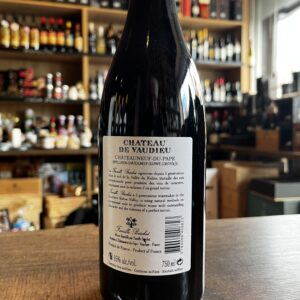
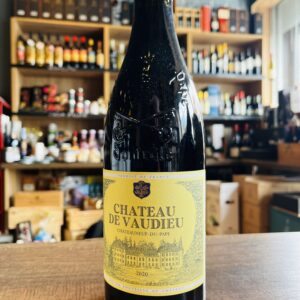 The Château de Vaudieu, an 18th-century historic estate located in the stunning region around Châteauneuf-du-Pape, has been with the Bréchet family for over five decades. Laurent Bréchet, the founder's grandson, is in charge of the estate. The name ‘Vaudieu’ is derived from ‘Vallée de Dieu’, meaning ‘Valley of God’, a nod to the area's picturesque landscape.
The Château de Vaudieu, an 18th-century historic estate located in the stunning region around Châteauneuf-du-Pape, has been with the Bréchet family for over five decades. Laurent Bréchet, the founder's grandson, is in charge of the estate. The name ‘Vaudieu’ is derived from ‘Vallée de Dieu’, meaning ‘Valley of God’, a nod to the area's picturesque landscape.




















